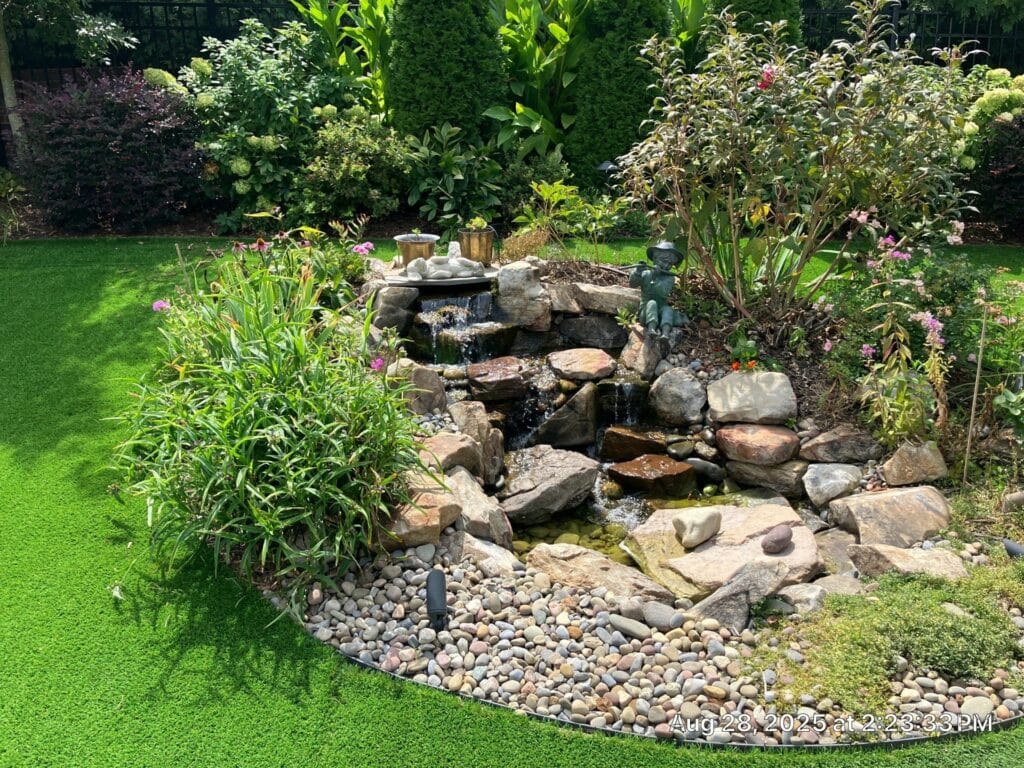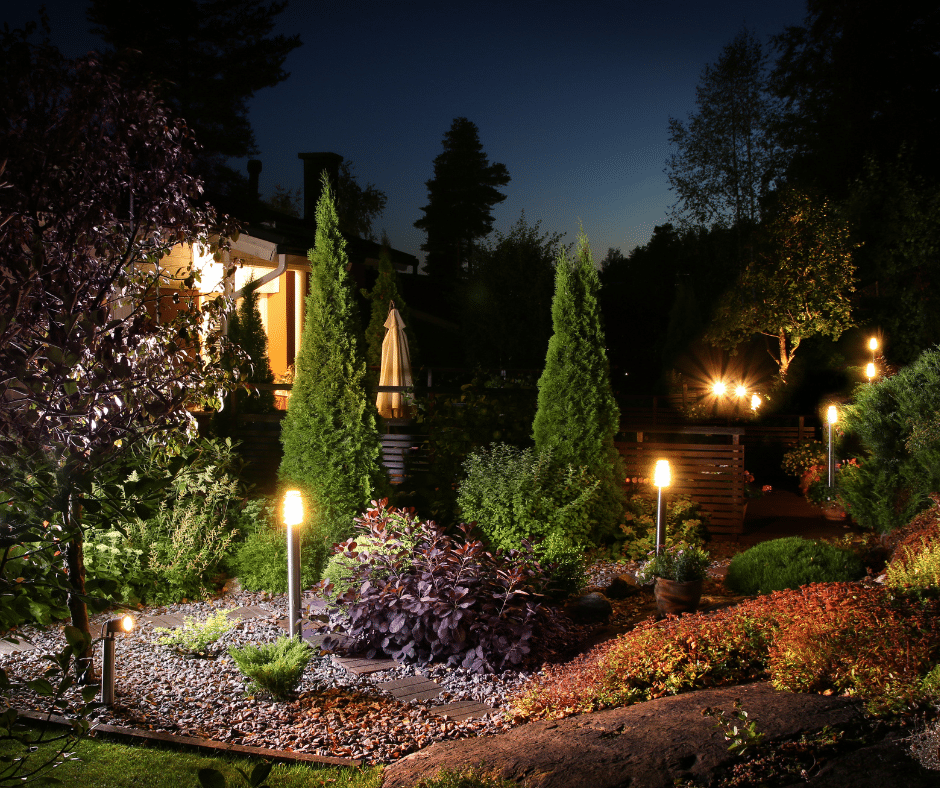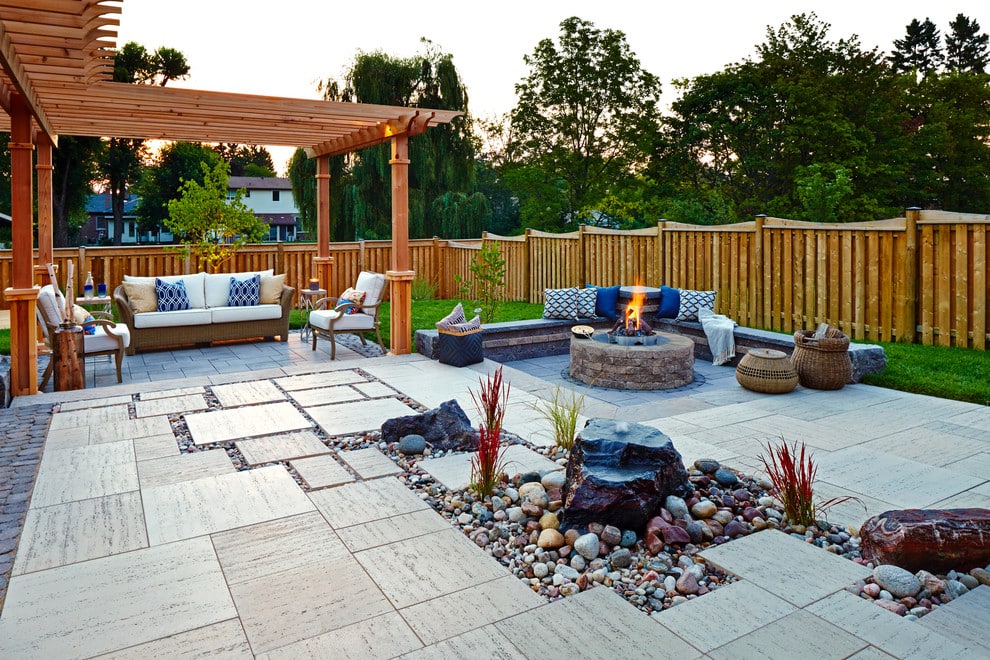Quick Answer
Looking to stay ahead of the curve with the latest patio design trends that will define outdoor living in 2026?
The future of patio design centers on five key trends: sustainable eco-friendly materials, biophilic design integration, smart outdoor technology, multifunctional spaces, and seamless indoor-outdoor transitions. These innovations combine environmental consciousness, advanced technology, and sophisticated design to create outdoor spaces that enhance both lifestyle and property value.
Read on for detailed insights into these emerging trends and how they can transform your outdoor space into a cutting-edge retreat that reflects the future of outdoor elegance.
Introduction
The landscape of patio design is undergoing a remarkable transformation as we approach 2026, with innovative trends that blend sophisticated aesthetics, environmental consciousness, and advanced technology. Today’s discerning homeowners seek outdoor spaces that not only provide beauty and functionality but also reflect their values and lifestyle preferences while incorporating the latest design innovations.
Charlotte’s favorable climate and growing appreciation for outdoor living make it an ideal location for implementing these forward-thinking design trends. The region’s year-round outdoor living potential, combined with an increasingly tech-savvy population, creates perfect conditions for embracing these patio innovations that will define the future of outdoor elegance.
These emerging trends represent more than aesthetic choices, they reflect fundamental shifts in how we interact with our outdoor spaces, prioritize sustainability, and integrate technology into our daily lives. Understanding these trends enables homeowners to create outdoor environments that remain current and valuable for years to come.
This comprehensive guide covers:
- Sustainable materials and eco-conscious design approaches
- Biophilic design principles that harmonize with nature
- Smart outdoor technology and automation systems
- Multifunctional space design for versatile outdoor living
- Seamless indoor-outdoor transition techniques
- Implementation strategies for Charlotte’s unique climate
Trend 1: Sustainable Luxury – Eco-Friendly Materials and Conscious Design
Sustainability has emerged as the defining characteristic of luxury patio design in 2026, with environmentally conscious materials taking center stage in high-end outdoor installations. This trend represents a fundamental shift toward responsible luxury that prioritizes environmental stewardship without compromising on sophistication or performance.
Recycled wood materials are gaining significant traction in luxury patio applications, offering exceptional character and environmental benefits. Reclaimed teak, cedar, and other premium hardwoods provide rich patinas and unique grain patterns that cannot be replicated with new materials. These sustainable options often outperform new lumber in terms of stability and weather resistance, having already undergone natural seasoning processes that enhance their durability.
Bamboo decking has become a cornerstone of sustainable luxury design due to its rapid regeneration properties and exceptional performance characteristics. High-quality bamboo products offer comparable strength to traditional hardwoods while providing superior moisture resistance and dimensional stability—particularly valuable in Charlotte’s humid subtropical climate.
Composite decking materials have evolved to offer luxury aesthetics with minimal environmental impact. Advanced composite products incorporate recycled plastics and wood fibers, creating surfaces that require no chemical treatments while maintaining consistent appearance and performance over decades of use. These materials often feature sophisticated textures and colors that replicate natural wood appearances while providing superior weather resistance.
The integration of sustainable materials extends beyond structural elements to include furnishings, planters, and decorative features. Recycled metal furniture, reclaimed stone elements, and sustainably sourced textiles create cohesive designs that align with environmental values while delivering exceptional aesthetic appeal.
This conscious approach to luxury reflects a broader lifestyle shift where environmental responsibility and sophisticated design coexist seamlessly. Charlotte’s climate conditions actually benefit many sustainable materials, as the natural weathering processes enhance their protective characteristics and visual appeal over time.

Trend 2: Biophilic Design – Harmonizing with Nature
Biophilic design has emerged as a powerful trend that integrates natural elements into outdoor living spaces, fostering deeper connections with the environment while promoting well-being and relaxation. This approach goes beyond simple landscaping to create immersive natural experiences that enhance both physical and mental health.
Vertical gardens represent one of the most striking applications of biophilic design in patio installations. These living walls create dramatic focal points while maximizing green space in smaller outdoor areas. Advanced irrigation systems and plant selection ensure year-round beauty while providing natural air purification and temperature moderation benefits.
Water elements play crucial roles in biophilic patio designs, providing both visual appeal and therapeutic sound benefits. Bubbling fountains, flowing streams, and reflecting pools create calming soundscapes that mask urban noise while promoting relaxation and stress reduction. The movement and sound of water create sensory experiences that connect occupants with natural processes.
Natural textures and organic forms become integral design elements that soften hardscape materials and create tactile experiences. Rough-hewn stone, weathered wood, and natural fiber textiles provide sensory variety that engages multiple senses while creating comfortable, inviting environments.
Plant selection focuses on native and adapted species that thrive in Charlotte’s climate while providing year-round interest through varying textures, colors, and seasonal changes. Aromatic plants including lavender, rosemary, and jasmine create natural aromatherapy environments that enhance the sensory wellness experience.

The psychological benefits of biophilic design extend beyond aesthetics to include stress reduction, improved air quality, and enhanced cognitive function. Research shows that exposure to natural elements in outdoor spaces promotes relaxation and mental clarity while supporting overall well-being.
Integration techniques ensure biophilic elements enhance rather than compete with hardscape features, creating harmonious environments that feel both sophisticated and naturally connected. Professional design coordination balances built and natural elements to achieve optimal visual and functional results.
Trend 3: Smart Outdoor Technology – Intelligent Automation for Modern Living
The integration of smart technology into outdoor spaces represents a revolutionary advancement in patio design, providing unprecedented convenience, customization, and energy management capabilities. These intelligent systems adapt to user preferences and environmental conditions while enhancing both functionality and lifestyle quality.
Automated lighting systems offer sophisticated control over outdoor ambiance and functionality through smartphone applications and voice control integration. LED technology enables infinite color adjustments, automated scheduling, and integration with security systems while providing energy efficiency and longevity. Users can create custom lighting scenes for different activities, adjust colors for special occasions, and ensure optimal illumination without manual intervention.
Smart irrigation systems utilize weather data, soil moisture sensors, and plant-specific programming to optimize water usage while maintaining landscape health. These systems automatically adjust watering schedules based on rainfall, temperature, and seasonal variations, reducing water consumption while ensuring optimal plant performance throughout Charlotte’s varying weather conditions.
Weather-responsive shade systems including automated pergolas and retractable canopies respond to sun position, wind conditions, and user preferences to optimize comfort throughout the day. Advanced motorized systems can adjust louver angles, extend or retract canopies, and modify ventilation based on real-time environmental data and pre-programmed schedules.
Climate control technology extends indoor comfort systems to outdoor environments through weather-resistant heating and cooling solutions. Radiant heating systems, misting systems, and strategic ventilation create comfortable microclimates that extend usable outdoor time throughout Charlotte’s seasonal variations.
Home automation integration enables outdoor systems to communicate with indoor technology, creating seamless transitions between indoor and outdoor living. Security systems, entertainment centers, and environmental controls can coordinate to enhance convenience while optimizing energy efficiency and security.
Wireless charging stations embedded in furniture and surfaces provide convenient device charging capabilities while maintaining clean, uncluttered outdoor environments. These features support modern lifestyle needs while preserving the peaceful atmosphere many seek in outdoor spaces.

Trend 4: Multifunctional Spaces – Versatile Design for Modern Lifestyles
The evolution toward multifunctional outdoor spaces reflects changing lifestyle needs and the desire to maximize the utility of outdoor investments. Modern patios incorporate diverse activity zones that adapt to various functions while maintaining cohesive design aesthetics.
Outdoor kitchen installations have become sophisticated culinary centers that rival indoor facilities in terms of functionality and equipment quality. outdoor kitchens now feature professional-grade appliances, ample prep space, convenient storage solutions, and integrated dining areas that create complete outdoor culinary experiences.
Fire pit seating areas with built-in benches and storage provide comfortable gathering spaces that function year-round. Advanced fire features include gas systems with remote controls, integrated seating with heating elements, and weather-resistant materials that maintain comfort during cooler Charlotte evenings.
Weatherproof workspaces equipped with technology infrastructure enable outdoor productivity while maintaining a connection with nature. These areas feature weather-resistant furniture, integrated charging stations, Wi-Fi coverage, and lighting designed for task-oriented activities while preserving the outdoor atmosphere.
Entertainment zones incorporate outdoor audio systems, weather-resistant display screens, and comfortable seating arrangements that rival indoor family rooms. Hidden speaker installations and landscape-integrated audio elements deliver exceptional sound quality without compromising design aesthetics.
Wellness areas including yoga platforms, meditation spaces, and exercise zones extend indoor fitness routines to outdoor environments. Professional-grade outdoor flooring materials provide stable, cushioned surfaces suitable for various activities while withstanding weather exposure and maintaining safety standards.
Storage solutions become integral design elements that maintain clean, organized appearances while providing convenient access to outdoor equipment, furniture cushions, and entertainment supplies. Built-in storage benches, weather-resistant cabinets, and hidden compartments optimize functionality without compromising aesthetics.
The key to successful multifunctional design lies in creating clear zone transitions while maintaining visual and functional connections throughout the space. Strategic lighting, pathway design, and landscape elements help define areas while ensuring smooth circulation and unified aesthetic appeal.

Trend 5: Seamless Indoor-Outdoor Transitions – Blurring Design Boundaries
The integration of indoor and outdoor living spaces has reached new sophistication levels, with patio designs featuring seamless transitions that create unified living environments. This trend extends interior comfort and functionality to outdoor areas while maintaining the unique benefits of outdoor living.
Consistent flooring materials represent the most effective method for creating visual continuity between indoor and outdoor spaces. Large-format porcelain tiles, polished concrete, and natural stone installations can transition smoothly from interior floors to exterior patios, creating expansive, unified surfaces that blur traditional boundaries.
Retractable glass walls and sliding door systems create flexible connections between indoor and outdoor spaces, allowing for complete opening during favorable weather while providing protection during inclement conditions. These systems enable true indoor-outdoor living that adapts to Charlotte’s seasonal variations.
Color palette coordination ensures visual harmony between interior and exterior design elements. Neutral tones with strategic accent colors create cohesive environments that feel intentional and sophisticated rather than disconnected or competing for attention.

Furniture selections increasingly mirror indoor quality and comfort levels while incorporating weather-resistant materials and construction techniques. High-end outdoor furniture now rivals interior pieces in terms of comfort, aesthetics, and durability, supporting extended outdoor living periods.
Covered outdoor living areas function as transitional zones that provide weather protection while maintaining the outdoor atmosphere. Advanced roofing systems, including retractable pergolas, automated louvered covers, and glass panel installations, offer flexibility to adapt spaces based on weather conditions and usage preferences.
Integrated climate control systems, including outdoor heating, cooling, and ventilation, enable comfortable outdoor living during temperature extremes while maintaining energy efficiency. These systems extend indoor comfort zones to outdoor areas, creating year-round usability regardless of weather conditions.
Lighting design coordination creates consistent ambiance between indoor and outdoor spaces through matching fixture styles, coordinated dimming systems, and integrated control platforms. This unified approach ensures seamless transitions from day to night and between indoor and outdoor activities.
Implementation Strategies for Charlotte’s Climate
Successfully implementing these patio trends in Charlotte requires understanding local climate conditions, seasonal variations, and environmental factors that influence material performance and system functionality.
Charlotte’s humid subtropical climate presents both opportunities and challenges for patio installations. Summer humidity levels averaging 70-80% require material selections that resist moisture absorption and provide adequate ventilation. Smart technology systems must accommodate high humidity levels while maintaining reliable performance.
Seasonal temperature variations from occasional winter freezes to hot summer days create thermal cycling that affects different materials and systems differently. Professional installation includes appropriate expansion joints, flexible connections, and weather-resistant sealing systems that accommodate these variations.
Drainage considerations become particularly important during Charlotte’s intense summer thunderstorms and occasional winter precipitation events. Smart irrigation systems must coordinate with natural rainfall patterns, while drainage infrastructure ensures outdoor spaces remain accessible and functional immediately following weather events.
Energy efficiency considerations become crucial during Charlotte’s hot summers when electrical demand peaks. Smart technology systems, including LED lighting, automated shading, and climate control, help minimize energy consumption while maintaining optimal comfort and functionality.
Plant selection for biophilic design elements must consider Charlotte’s USDA hardiness zone and seasonal variations. Native and adapted species provide the best performance while supporting local ecosystems and requiring minimal maintenance once established.
Professional installation ensures all systems coordinate effectively while meeting local building codes and electrical requirements. Licensed contractors familiar with Charlotte’s climate and regulations provide optimal results while protecting investments and ensuring safety.
FAQ
Sustainable materials like bamboo, recycled composites, and reclaimed wood often outperform traditional options in humid conditions due to their natural resistance to moisture and dimensional stability. Proper installation and occasional maintenance ensure long-term performance and aesthetic appeal.
Automated lighting systems, climate control features, and smart irrigation typically provide the highest return on investment through daily usability improvements, energy efficiency benefits, and reduced maintenance requirements. These systems enhance comfort while reducing ongoing operational costs.
Multifunctional designs are particularly valuable in smaller spaces, with creative solutions including convertible furniture, vertical storage, and zone-specific lighting that maximize utility without compromising aesthetics. Professional design ensures optimal space utilization.
Well-designed transitions with proper insulation, automated closure systems, and zoned climate control typically reduce overall energy costs by optimizing indoor space usage and reducing conditioning loads. Smart systems coordinate indoor and outdoor climate management for maximum efficiency.
Modern patio systems are designed for minimal maintenance, with smart technology providing diagnostic capabilities and automated operation. Regular seasonal inspections, cleaning, and professional system checks ensure optimal performance and longevity.
Conclusion
The future of outdoor elegance lies in the thoughtful integration of sustainability, technology, and sophisticated design that creates outdoor spaces rivaling the finest indoor environments. These five patio design trends represent fundamental shifts in how we approach outdoor living, emphasizing environmental responsibility, technological advancement, and lifestyle enhancement.
The combination of eco-friendly materials, biophilic design elements, smart technology integration, multifunctional capabilities, and seamless indoor-outdoor transitions creates outdoor spaces that not only enhance daily living but also increase property value while supporting environmental stewardship.
For Charlotte homeowners seeking to create cutting-edge outdoor environments that remain current and valuable for years to come, these emerging trends provide the roadmap for patio design that defines the future of outdoor elegance.
